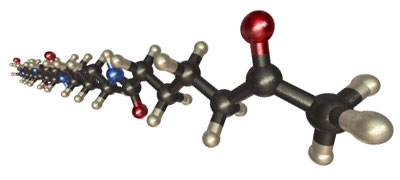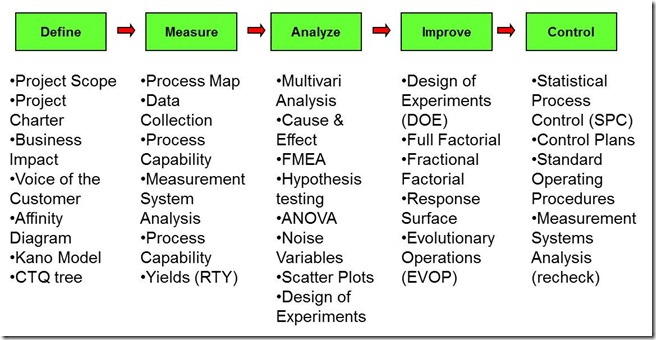 In our previous post we started to outline a process management approach to solving complex problems. In the second in the series, we will discuss the very useful Six Sigma approach.
In our previous post we started to outline a process management approach to solving complex problems. In the second in the series, we will discuss the very useful Six Sigma approach.
Six Sigma is a systematic process management method for improving, building, and sustaining business performance. Six Sigma uses a structured approach and toolset focused on reducing variation and delivering near defect-free products and services. The Six Sigma toolkit can be used for a variety of applications, including manufacturing cost reductions, developing new products (Design for Six Sigma), and business process improvements.
Traditionally, Six Sigma has been used in solving manufacturing process problems. The power of Six Sigma lies in the process focus. Remember, all work is a process. Think about customer invoicing, order entry, or customer service. These are processes that have the potential to cause defects and variation for your customers. The goal of all process improvement efforts is to identify the key process outputs and then minimize variation and control the key process inputs variables.
A balanced approach addresses both customer focused projects and internal process improvement projects. To maximize the potential gains, the project portfolio should contain a balance of both short-term and long-term improvement projects.
Good Six Sigma projects are linked to a clearly defined process and have the following four elements:
- There is a gap between current and required/desired performance in a key business process (manufacturing or transactional process). Closing the gap will have a measurable and large financial impact.
- The cause of the problem or gap is not clearly understood.
- There is not a predetermined solution or optimal improvement method readily apparent.
- The performance of the process can be measured and quantified.
The following is an example of a good Six Sigma project. Acme Widgets Inc. is the manufacturer of a really cool new toy. To keep up with tremendous market demand, Acme installed two new molding machines. The engineers found that for one part of a subassembly, a critical part dimension was changing in a random way. This caused problems at final assembly, since the parts wouldn’t fit properly.
The part variation was traced back to the two new machines. There also was variability between the two new machines. Operators said that they had trouble keeping the new machines running in spec and hated to run the new equipment. Scrap from the two new machines is costing Acme $2,000 per day. Customers are upset because Acme can’t ship enough of the cool new toys and some are defective.
Analysis:
- There clearly is a defined manufacturing problem with a large financial impact.
- The root cause of the problem is not clearly understood, but early data suggests the two new machines are involved.
- There is not a readily available solution to the problem.
- The yield of the molding process can be measured and quantified.
Six Sigma utilizes a five step process called DMAIC:
Define: Select the appropriate customer-focused defect or problem. Document the business impact and the project deliverables in the project charter. Form a multidisciplinary team.
Measure: Develop a factual understanding of the current process and locate sources of problems. Establish “as-is” process map, measure process capability, and collect data to give a baseline of the current process.
Analyze: Identify potential root causes of defects or sources of variation. Investigate the causes of defects using experiments (and statistical analysis). Verify the root cause(s) of the problem.
Improve: Eliminate the verified root cause(s) or reduce sources of variation. The goal is to demonstrate with data that the problem is solved and leads to a measurable improvement.
Control: Implement methods to hold the gains such as standard operating procedures and statistical process controls (SPC).
the following diagram shows the various phases of DMAIC.
The Six Sigma toolbox provides a wide variety of tools, but realize that not every tool is used on a project. Depending on the type of project and how much data or process information is already known, the team can pick the appropriate tool for the task at hand.
With the economy in a state of uncertainty, it is time to act. Take a close look at your business and locate the problem areas and opportunities to improve. Use your internal resources or seek outside help to get the ball rolling. The Six Sigma toolkit described in this post provides a structured roadmap to eliminate defects, reduce variation and delight customers, leading to a measurable bottom line impact. Before it’s too late, work hard to dramatically improve your business processes. This won’t be an easy task, but the failure to act will be even more painful.


Thanks for sharing a great post! Really plant innovation is a very complicated process and sometimes needs a complete shutdown. Do you think hiring an expert business consultant is a good idea for process innovation?